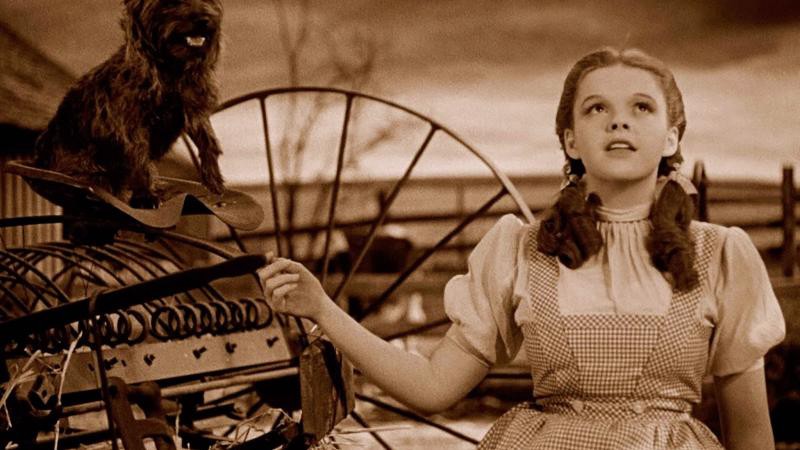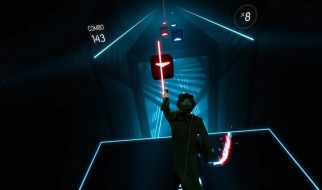Over the years, I?ve analyzed dozens of movies through the lens of five primary character archetypes: Protagonist, Nemesis, Attractor, Mentor, Trickster. This is my theory, that most movies have these five narrative dynamics at work in them:
A character or characters with a conscious goal toward which they are moving forward: Protagonist.
A character or characters who provide an oppositional force: Nemesis.
An ally who is most connected to the Protagonist?s emotional development: Attractor.
An ally who is most connected to the Protagonist?s intellectual development: Mentor.
A character who switches from ally to enemy, enemy to ally, and tests the will of the Protagonist: Trickster.
We see this set of narrative dynamics in movie after movie after movie, enough to suggest there is a pattern at work here. So this week, a series on these five character archetypes in movies.
Today: The classic 1939 movie The Wizard of Oz.
IMDb plot summary: When a nasty neighbor tries to have her dog put to sleep, Dorothy takes her dog Toto, to run away. A cyclone appears and carries her to the magical land of Oz. Wishing to return, she begins to travel to the Emerald City where a great wizard lives. On her way she meets a Scarecrow who needs a brain, a Tin Man who wants a heart, and a Cowardly Lion who desperately needs courage. They all hope the Wizard of Oz will help them, before the Wicked Witch of the West catches up with them.
Protagonist: Dorothy Gale (Judy Garland)
Clearly Dorothy is the story?s Protagonist:
- The story is told through her perspective
- It?s her journey
- The plot and all the other characters revolve around her
- Her character goes through the most significant metamorphosis

Typically a Protagonist begins a story in a state of what I call Disunity. Joseph Campbell, who wrote the seminal work ?The Hero with a Thousand Faces? which influenced George Lucas in writing Star Wars and has had a huge impact in Hollywood, describes it this way:
The Hero is making do, but feels something missing, a sense of discomfort or tension. The Hero needs to change, even if they are unaware of that need.
This is a critical point, one demonstrated when Dorothy sings ?Somewhere Over the Rainbow? and in particular with these lines [emphasis added]:
?Someday I?ll wish upon a starAnd wake up where the clouds are farBehind me.Where troubles melt like lemon dropsAway above the chimney topsThat?s where you?ll find me.?
What are Dorothy?s clouds? What are her troubles? Clearly she has an issue with Miss Gulch, that?s how the movie begins, yet another incident in an ongoing struggle between the ?old witch? and Dorothy?s dog, Toto. But the subtext of the song and the emotion which drives Dorothy as she sings it derives from something else.
Fundamentally I think she feels a sense of alienation, like in some very real way she doesn?t belong where she lives:
- She?s a young girl surrounded by people older than she (in the Kansas scenes, there are seven other humans and each of them is an adult).
- Everyone on the farm ? from Auntie Em and Uncle Henry to the hired help Hunk, Zeke, and Hickory ? has a specific job or task. Dorothy does not.
- Nor does she have anyone (other than Toto) to play with, one reason she gets into trouble while ?walking along the railing between the pig pens? and falling in, necessitating Zeke to rescue her (this incident reinforces how she just doesn?t fit in with the ways of the farm).
- She even dresses differently than everyone else in a crisp blue-and-white dress whereas the others wear dingy work clothes.
- Perhaps the single biggest contributing factor for Dorothy?s sense of alienation is a fact we may tend to overlook: she is an orphan.
So we can say the Protagonist begins The Wizard of Oz in a state of Disunity: She?s living in a home that doesn?t feel like home. She yearns to ?fly away? to some dream-like place ?over the rainbow? where she will find a sense of belonging.
Indeed it takes a magical trek through Oz with all its challenges and complications, allies and enemies to help Dorothy transform from an alienated girl into someone who by the end feels about the farm and its people ? ?there?s no place like home.?
Nemesis: Miss Gulch / The Wicked Witch of the West (Margaret Hamilton)
Functioning in opposition to Dorothy is Miss Gulch. She rides her bicycle to Uncle Henry and Aunt Em?s farm to take away Toto stating, ?If you don?t hand over that dog, I?ll bring a damage suit that?ll take your whole farm!? Dorothy?s response? To cry out at Miss Gulch: ?You wicked old witch!? This sets into motion how Miss Gulch transforms into the Wicked Witch of the West once Dorothy reaches Oz.

Attractors: Hunk / Scarecrow (Ray Bolger), Hickory / Tin Man (Jack Haley), Zeke / Cowardly Lion (Bert Lahr)
The Attractors begin the story as the farm?s three hired hands: Hunk, Hickory, and Zeke, as close to friends as Dorothy has (aside from Toto). Once Dorothy journeys to Oz, these three accompany her in the form of Scarecrow, Tin Man, and the Cowardly Lion. Her allies along the way, they play a critical role in Dorothy?s change of heart about her home back in Kansas ? befitting their roles as Attractor characters.
DOROTHYOh, you?re the best friends anybody everhad! And it?s funny, but I feel as if I?veknown you all the time. But I couldn?thave, could I?
Friends. These three serve as a bridge to help Dorothy find a genuine sense of home.
Mentor: Glinda (Billie Burke)
The Mentor is Glinda. A good witch, she dispenses wisdom to Dorothy including advice about the ruby slippers, going to see the Wizard of Oz, even telling her to ?follow the yellow brick road.? All that is the stuff of a Mentor character.
Trickster: Professor Marvel / The Wizard / The Gatekeeper / The Carriage Driver / The Guard (Frank Morgan)
There is Professor Marvel who then plays the role of four other characters in Oz: The Doorman, The Guard Who Cries, The Carriage Driver, and the Wizard of Oz. Each version of this character (with the exception of the Carriage Driver) tests Dorothy, sometimes an ally, sometimes an enemy, in concert with a Trickster.
Of course it?s the Wizard himself who provides the biggest challenge: To bring back the Wicked Witch?s broom. But then one more obstacle when instead of escorting Dorothy back home in his hot air balloon, he flies away ? leaving Dorothy crestfallen, but preparing her for Glinda?s wisdom ? ?Just click your heels and repeat, ?There?s no place like home?? ? to enable her to return to Kansas.
Trickster: Toto
One other Trickster: Toto. The little dog is the one who precipitates everything by harassing Miss Gulch. Gets taken away, escapes, lead to Dorothy running away, discovers who the real Wizard is by pulling back the curtain, and causes Dorothy to miss the balloon flight back to Kansas when he leaps out to chase a cat. Ally, enemy, enemy, ally? tests.

The journey to Oz allows Dorothy to get the intellectual awareness of how much Auntie Em has done for her, but it is through the bonding experiences with Scarecrow, Tin Man, and the Cowardly Lion that she comes to a deeper emotional understanding ? these three are her friends. Because of these newfound friendships, she discovers a sense of belonging, fulfilling her need that her home in Kansas is truly a home.
As Dorothy expresses in the very last lines of the movie:
DOROTHYHome! And this is my room ? and you?reall here! And I?m not going to leave hereever, ever again, because I love you all!And ? Oh, Auntie Em ? there?s no placelike home!
Once she returns, the place which once did not feel like a home, does, a clear example of her metamorphosis.
This is just one many movies which reflect these five primary character archetypes. That said, I am not suggesting this is the only way to approach writing a screenplay. There is no right way to write. Every writer is different. Every story is different. All I am suggesting is there is something going on here about this specific set of narrative dynamics as exhibited in the form of character types. And they can be a huge help for writers as we engage our characters, their interrelationships informing our story-crafting and plotting process.
What are your thoughts? Head to comments and let me know what you think.
Tomorrow: Another movie analyzed through the lens of character archetypes.


